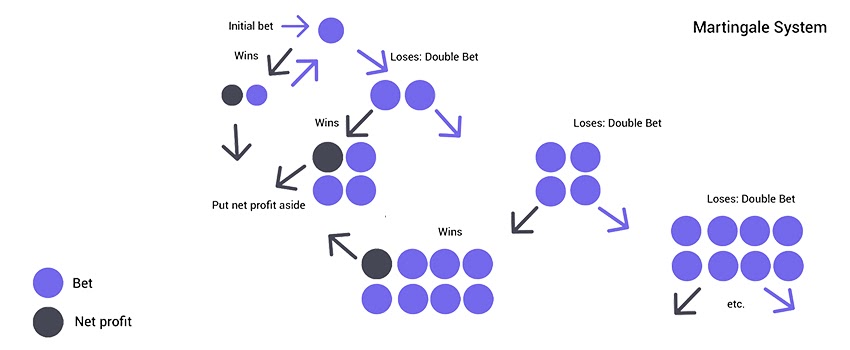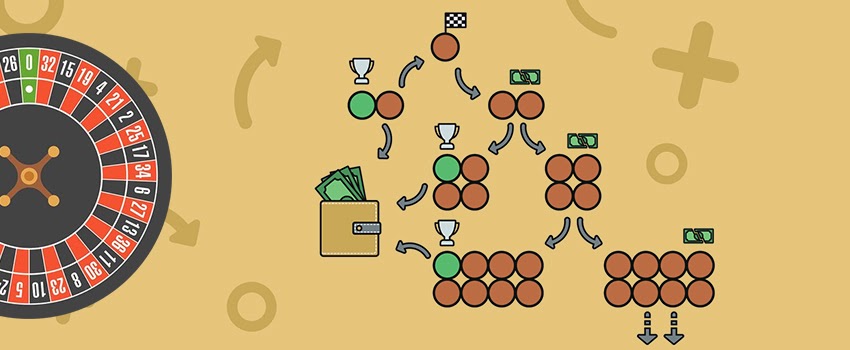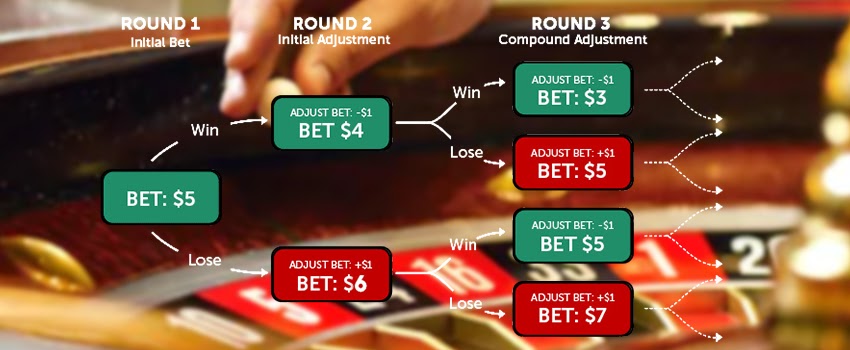It is no surprise that Roulette is a highly entertaining game, amusing to wager on and one of the most attractive ones among all casino games. Roulette has been studied, tested and analysed over time. The game is easy enough to get you started, and it gives you the chance to win with just a wheel’s spin. Ever since Roulette was invented, people have tried to formulate a plan to combat a game that appears to really be about sheer chance. Keep reading as we describe different Roulette betting strategies and evaluate their benefits and drawbacks. You can visit Winissimo where you will experience some incredible fun playing Roulette.
Although there is no way to predict where the Roulette ball will fall, there is a chance that you can bring more competitive play to the game. Several techniques are advised to increase profits and maintain the house’s edge in Roulette as minimal as possible.
What are the advantages of a Roulette strategy?
The goal of using any Roulette strategy is to increase profits and reduce losses. These techniques are not meant to hinder your efficiency, but merely to encourage and improve your game. These betting techniques are structured to help you create an optimal bet while you are playing a game of chance. Each strategy has its own set of advantages and disadvantages, some of which provide more significant results with your exact playing style. Some are designed for budget-minded players, whereas some others are made particularly for high rollers.
Types of Roulette Strategies
Roulette strategies are diverse so there is a requirement for classification schemes. We will do this by splitting them into sections. The first part will address progression betting after each round, and the next part will cover the strategies where your bet remains the same.
Progressive betting
Progressive betting techniques are built with the premise that players will raise their bet size after each round’s outcome. One of the most popular and commonly used progressive Roulette tactics is the Martingale method.
The Martingale strategy

Martingale proposes doubling the wager after every setback. This is really common with learners because it’s easy to understand. You may not see seasoned players using this tactic because it’s very risky and difficult to succeed.
Martingale plan steps:
Join an online casino with a modest minimum bet as well as a higher maximum bet. Small starting Roulette bets are important since they are what allow you to make as many repeat bets as possible.
- Bet a small number.
- When you win a bet, hold the winnings, and bet the very same tiny sum of money again. You could get away now with just $2 if you would like to, but there isn’t a lot of difference in going with $2 or zero.
- If you lose, wager twice the original amount of money and place it on the same bet again. For e.g., if you lose $1 on black, you have to put another $2 on black again.
- If and when you win the 2nd bet, retain your earnings and bet the small initial bet – you have earned back your losses and will go down to a sum less than the stipulated amount.
- If you fail yet, double the bet sum again.
- Repeat the steps until the entire capital is invested, or the maximum bet limit is reached at the table.
As in every gambling scheme, there are drawbacks associated with the Martingale system. If out of 100 games, one single colour won the game all of the 100 times, it does not mean another colour will appear in the next game. Compared to other games, Roulette has a slightly smaller probability because of 0 and 00. In comparison, after multiple straight losses, you will run out of money or reach the max limit– and you will be in a fix.
Another popular practice is the Paroli system, which is also known as the Reverse Martingale system. This technique encourages you to double the wagers after each victory, which makes this strategy less risky than the Martingale system.
The Reverse Martingale Roulette strategy

According to the term, this type of Roulette strategy is the opposite technique of the previously mentioned Martingale system. Rather than increasing the amount of money you gamble when you don’t win, you can increase it after making a winning bet. The theory is that you’ll draw on your winning streaks and stay steady while your luck is down by reducing your losses.
Reverse Martingale plan steps:- You have to find a low minimum and a high maximum bet table.
- Then you have to bet something small.
- Keep wagering on the very same spot till you hit it. If you keep on losing your bets, keep your bets small.
- Once you manage to hit the spot and win your bet, wager in the next round by doubling the bet for the same spot.
- If you win, continue bet doubling.
- If you lose, get down the original number again.
The greatest drawback of this Roulette technique is that it requires a high degree of luck. The Reverse Martingale Plan is highly volatile since you cannot win back your original investment once you lose. Unfortunately for this one to perform properly, you need to leave once you hit your luck.
Martingale and Paroli Roulette strategies perform best for outside bets with Roulette odds close to 50% and are a decent way to make up for the defeats any player faces. But they can also lead you to easily run out of your bankroll, as well as the table limits before you have regained the funds you have lost.
Strategies with a linear or flat progression are more appropriate for inside-betting – because even if you win less often, you may get more profit than what you have lost whenever you manage to win. The D’Alembert method is a clear example of this simple system.
The D’Alembert Roulette strategy

For players trying to get a less risky strategy than the above mentioned systems of Roulette, there is the D’Alembert Technique. In this strategy, the players have to raise and lower bets by 1, which is far better than doubling.
D’Alembert plan steps:- As with the prior Roulette techniques, the initial wager should be minimal.
- Increase or decrease your bet by one after a victory and after a loss respectively.
- When you get as many victories as you lose, make up your mind and step back from the game. If you’re on a losing line, wait it out and continue to play till your wins are equal to your losses.
- If you have the same number of losses and wins, you can gather your profits and step back from the game.
- In the case of an equal allocation of victories and losses, the D’Alembert method will provide you with positive results.
The downside of this approach is keeping a tally of your final outcome ranking.
Players use the mathematical series developed by Fibonacci for a secure progressive betting technique. This strategy is considered less risky than the Martingale.
The Fibonacci Roulette Strategy

Fibonacci was a prominent mathematician from Italy who penned a particular number sequence in the early 1200s. The series was popularly nicknamed the “Fibonacci series” in the 19th century. The series is based upon the fact that every digit after the 1st two is the addition/total/sum of the preceding numbers. The Fibonacci series goes like this: 1, 1, 2, 3, 5, 8, 13, 21, 34, and so on.
The Fibonacci plan requires placing bets by combining the last two wagers together. Via this gambling tactic, you will make a profit even though your number of lost games is more than the winning games.
Fibonacci technique steps:- To get started, place a minimal bet.
- If you lose, move on and bet again by increasing your wagering amount according to the Fibonacci sequence.
- If you lose your first bet of $1, you have to bet another $1. If you fail this bet, bet $2 on the next try. ($1 + $1 = $2).
- If and when you score, switch back two digits in the series and bet that number.
- Obviously, try to step back whenever you are in the black and try not to be in the red.
The biggest drawback with this particular Roulette technique is that you will lose more money if you continue to go farther down in the series. You must act fast, or else you could lose more bankroll than you will possibly expect.
Non-Progressive Betting
The second group of betting strategies are not centred on progressive betting. They either encourage you to play the whole game with the same bet or alter it according to your will.
A little known but enjoyable betting strategy is called the James Bond strategy. This flat betting technique employs elements of flat betting designed by Sir Ian Fleming and seems like a way to improve the chances of the player and covers almost half of the Roulette table in bets. Indeed, not.
The James Bond Roulette strategy

Understand the Roulette technique Ian Fleming introduced at the table and his popular character. This technique entails playing Roulette with a minimum of $200.
This strategy includes the following steps:
- You have to bet $140 on the big numbers (19-36).
- Then you have to bet on the digits from 13 to 18.
- Then you have to put $10 on 0 as an insurance bet.
If any number from 1 to 12 turns up, you will lose $200, and in this case, you can start using the Martingale system of strategy. However, if any bets are good enough to come along, you will win a nice profit. If it is from 19 to 36, you will get $80; if it is from 13 to 18, you will get $100; and if it is 0, you get $160.
The greatest drawback of this strategy is its connection to the probability of numbers one to twelve popping up.
Another Roulette strategy is betting on adjacent numbers. The concept of this bet is to split the bet and put the bets on five numbers that are next to one another on the Roulette wheel. It is often a smart idea to wager on the neighbouring pockets as an alternative choice to bet on only one pocket. Essentially, you will maximise the odds of winning. Also called as the Called and Announced bets, this is only allowed in French Roulette.
What are the conditions that affect Roulette strategies?
Game Forms
There are several Roulette styles (e.g. American, French, European), and each one has slightly-different house advantages. These subtle variations are significant when playing Roulette using the strategies.
For example, in addition to the numbers 0-9, you’ll need to be mindful that American Roulette has an additional 00, affecting specific strategy.
The bet level (minimum and maximum)
Every online casino has a minimum and maximum bet, which is how much one can wager on a Roulette game. These limits might affect the effectiveness of a strategy.
Minimum bets are often in the range of $10, and the upper end might be around $60,000, but these can differ from one casino to another. If you’re using the Martingale strategy, for instance, you will go bankrupt if you don’t win enough to offset your previous losses before reaching the maximum level.
Payout rates
When you plan to use a Roulette tactic, you must consider the exact payouts for a given bet. It is not so straightforward as it seems in Roulette.
The payouts for individual bets are standardised, which makes them not so beneficial bets in many situations.
Why is no strategy ideal?
The key objective of every casino is to make profits by getting the players’ money. That is why Roulette is built this way so that no technique is guaranteed. Since the house advantage is rooted in play rules, the casino always benefits long term. You might win certain spins, you might lose certain spins, sometimes you might make some profit, and sometimes you might leave the Roulette table with loss. This is what renders Roulette fun, addictive and thrilling.
Trying out different strategies at online casinos
You can visit any trustworthy online casino like Winissimo, where you can test out the Roulette strategies mentioned above. You can see the dealer and the Roulette wheel turning right in front of you in Live Roulette. Online Roulette is an enjoyable and exciting game in which you can practice different techniques to decide which work best for you.


